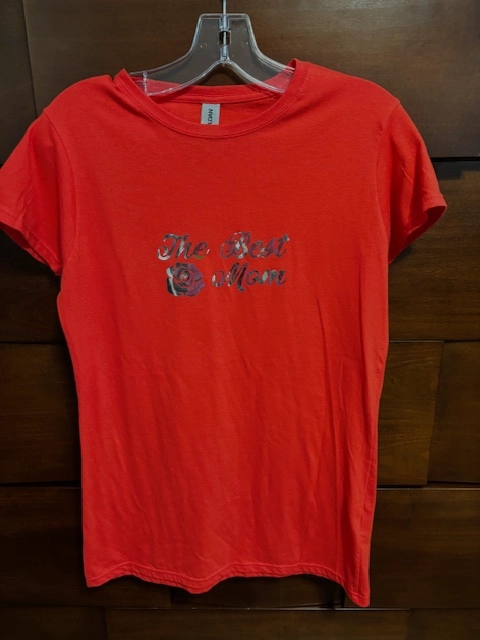Heat Transfer on T-Shirts and Aprons - Custom-made Styles and Logos
Heat Transfer on T-Shirts and Aprons - Custom-made Styles and Logos
Blog Article
The Art of Custom Needlework: Unlocking the Secrets to Creating Distinct and Unforgettable Styles
The keys to developing custom-made embroidery designs that astound the eye and leave a long-term perception lie in a delicate equilibrium of method, imagination, and interest to detail. As we delve right into the world of custom needlework, we discover the nuanced interplay in between thread option, sew complexity, and style personalization that boosts a simple garment to a work of art.
Picking the Right Embroidery Threads
When choosing needlework threads, what crucial factors should you consider to make sure the most effective results for your custom-made layouts? The choice of embroidery string is critical in identifying the last end result of your stitched layout. One of the main factors to consider is the product of the thread. Different materials such as cotton, polyester, rayon, and silk provide differing degrees of luster, sturdiness, and appearance. It is important to select a thread material that matches the material you are stitching on and straightens with the desired look of the style.
In addition, the weight or density of the string plays a substantial duty in the look of the needlework. Thicker threads can add dimension and texture to your layout, while finer strings are excellent for complex information and little text. Additionally, considering the shade fastness and washability of the string is vital to make sure that your custom-made styles maintain their top quality and vibrancy with time. By thoroughly assessing these elements and selecting high-quality strings that satisfy your particular requirements, you can boost the visual appeal and long life of your stitched creations.
Exploring Various Stitch Techniques
To dive into the world of 'Exploring Various Stitch Techniques', one should grasp the ins and outs and nuances that each stitching approach gives the art of needlework. Different stitch strategies not only add aesthetic rate of interest yet additionally add to the total texture and dimension of the layout. One popular stitch method is the satin stitch, which involves carefully stuffed parallel stitches to create a smooth and shiny surface area, ideal for filling up in shapes and developing strong describes.
On the other hand, the backstitch is a functional strategy often utilized for detailing and including fine information. It involves stitching in reverse to develop a solid line of embroidery. Furthermore, the French knot stitch includes a responsive component to designs, ideal for producing textured accents like blossom facilities or attractive touches.
Exploring various stitch methods allows embroiderers to play with light, shadow, and deepness within their layouts, boosting the visual charm and imaginative top quality of their needlework tasks. By understanding various stitching methods, one can unlock endless possibilities for creating distinct and unforgettable custom-made needlework pieces.
Incorporating Personalized Style Aspects
Having actually site here checked out the complexities of different stitch strategies such as the satin stitch, backstitch, and French knot, the focus currently moves towards including individualized style elements in custom-made embroidery projects. Customized design components play a vital role in making needlework projects absolutely special and memorable.
An additional method to include personalized style elements is by consisting of symbols or themes that hold unique significance to the recipient or mirror their rate of interests and individuality. For instance, incorporating a preferred blossom, animal, or hobby-related sign can make the embroidery style a lot more meaningful and personalized. In addition, choosing colors that reverberate with the recipient or straighten with the intended style can better enhance the personalization of the needlework task.
Mastering the Art of Color Sychronisation

One key element of shade control is understanding shade theory. This includes recognizing how various shades communicate with each various other, the feelings they convey, and just how they can be combined to produce aesthetically attractive layouts. By applying color view it now concept concepts, embroiderers can create harmonious shade palettes that enhance the general appearance of the design.
Furthermore, taking notice of contrast is important in shade coordination. Using contrasting shades can aid certain elements of the style pop, enhance readability, and create a visually dynamic embroidery item. By understanding the art of color sychronisation, embroiderers can boost their layouts and develop memorable pieces that resonate with clients and visitors alike.
Enhancing Texture With Advanced Embroidery Stitches
Bullion knots, on the various other hand, can be utilized to create twisted, ropelike aspects that include an extravagant feeling to the embroidery. Experimenting with these advanced needlework stitches permits you to press the boundaries of traditional needlework and develop absolutely one-of-a-kind and aesthetically appealing textures in your layouts.
Final Thought
To conclude, the art of customized needlework includes a combination of choosing the appropriate threads, exploring numerous stitch methods, integrating tailored style elements, understanding shade coordination, and boosting structure with advanced stitches. By comprehending and executing these key aspects, embroiderers can create one-of-a-kind and unforgettable layouts that showcase their imagination and skill. Needlework lovers can open the secrets to developing stunning and custom pieces that attract attention and leave an enduring impression.
Report this page